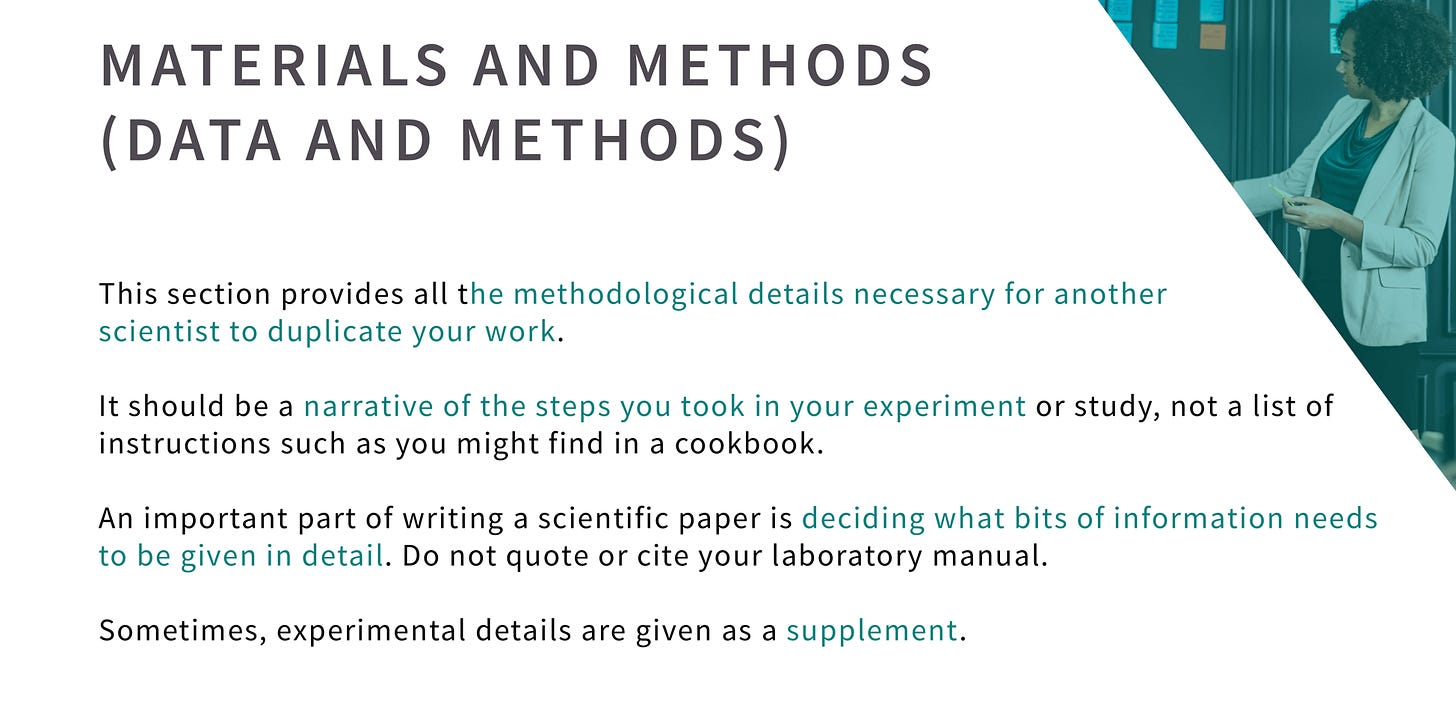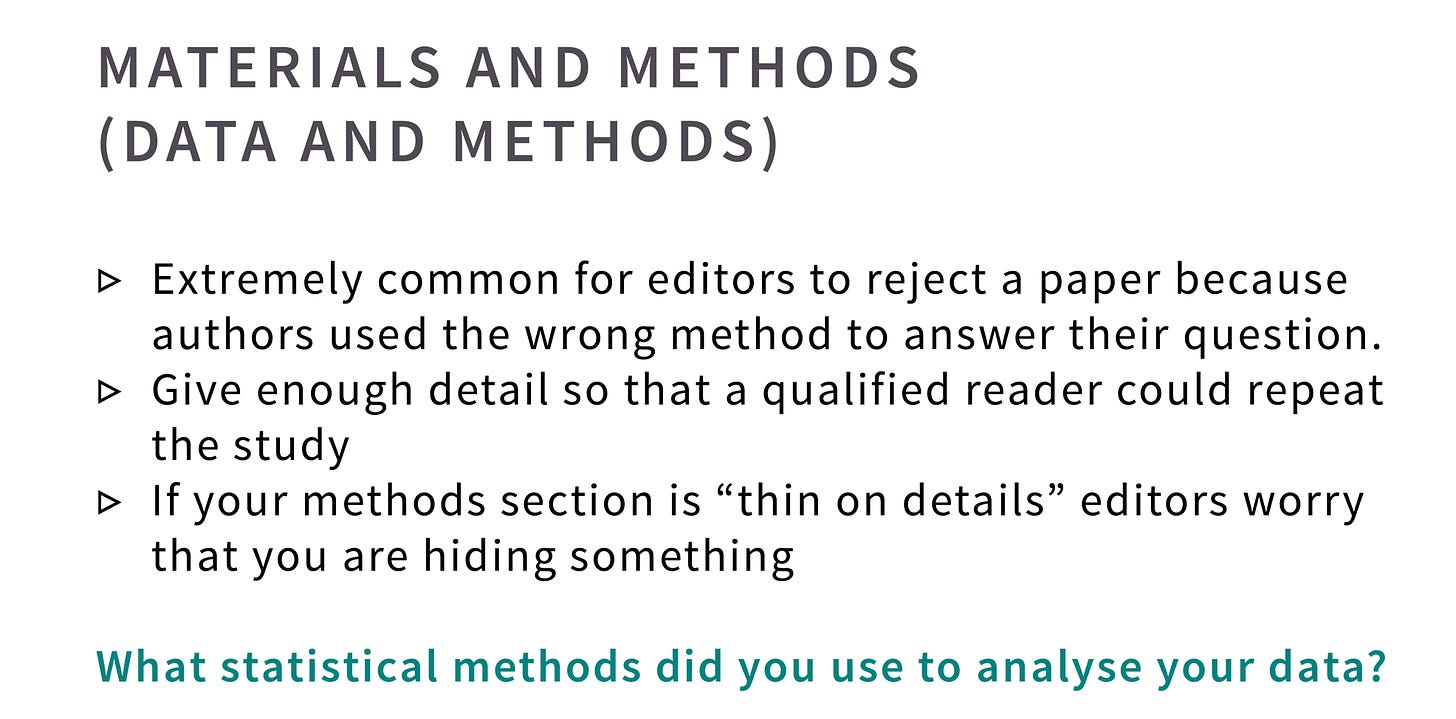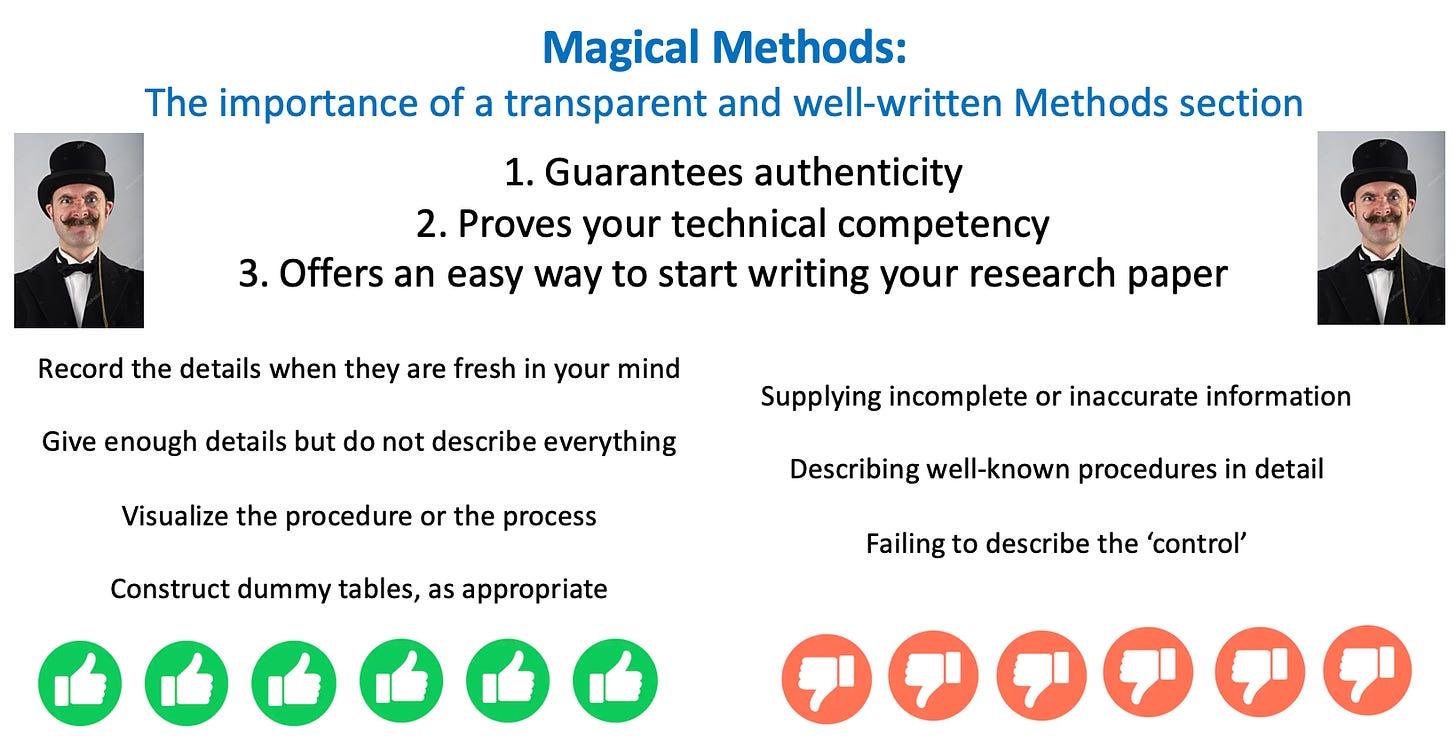Writing a magical Methods section for your next paper ...
This section of your scientific paper is both the easiest to write and also one of the most important: Here you have the chance to build ‘the story’ of your study
In my experience people tend to think that this aspect of scientific paper writing, the Materials & Methods section, is boring. Who wants to sit down and write a Methods section? This is the worst part of the paper writing process. No! No, no, no, no, no!
In fact this part of your scientific paper is both the easiest to write and also one of the most important: here you have the chance to build ‘the story’ of your study. To tell me about the journey that you took as you developed your research, collected data and then analyzed it to develop your results and ultimate conclusions. This section is very important and also the most straightforward part of your paper to write. People often start working first on the Materials & Methods section of their articles for these reasons.
Remember: This section of your paper should take the reader on a journey: How was your data collected and then how was it analyzed?
This section, sometimes also called ‘Data and Methods’, or just ‘Methods’ (depending on journal, and you should have a target journal in mind, of course, before starting to write, as we’ve discussed), should provide all the methodological details necessary for another scientist to duplicate your work. This is important. How can someone else repeat your study? The Methods therefore requires a narrative of the steps you took in your experiment or study, but not a list of instructions such as you might find in a cookbook. You need to strike a balance between enough information for someone to repeat your work and too much information: One key skill you will develop as you write more scientific papers is deciding what bits of information needs to be given in detail. For example, if you’ve used a method that comes from previous work, you can just cite earlier studies, rather than repeating the methodological description over again.
Here are some tips to think about when putting together your methods section: walk the reader through the steps that you went through doing the research. Start with data collection then and end with analysis and sub-divide this section into three of four headings, if possible. It’s extremely common for editors to reject a paper because authors used the wrong method to answer their question. Give enough detail so that a qualified reader could repeat the study: If your methods section is ‘thin on details’ editors worry that you are hiding something. End with the analysis: What statistical methods did you use to analyse your data?
The most important thing here is to be structured: Check out other papers in your field and see how other authors have structured their Methods sections. Make a list beforehand. Once you have a series of headings for this section, you are in good shape because you can re-use these headings in the Results section and then again in the Discussion (you’ll see how this works in later articles). The most useful thing you can do to help you write this part of your article is to check how other authors in your field have structured their work: don’t copy, of course, but to get an idea of the sorts of subheadings used by other authors.
Here are some ideas for headings from the Methods section of one (very good) paper we’ve edited recently:
-Plant growth conditions and evaluation of root morphology
-QTL detection
-Protein extraction and digestion
-Protein identification and quantification
-Statistical analysis
The research field is irrelevant; I hope that you can see a structure in this example that takes the reader on a journey through the research: how the plants were grown, how data was extracted/collected, and how the analysis was performed. Almost always these sections finish with details of the analysis at the end. Please see if you can write a list of headings like this to structure the Methods section of your research paper: initial research data, extraction/collection, analysis (or similar).
The Materials & Methods is not a boring section. Getting this part of your paper right, with a clear structure, is the key to writing the remainder: Results and Discussion.







